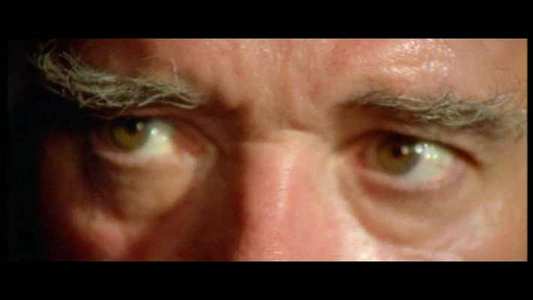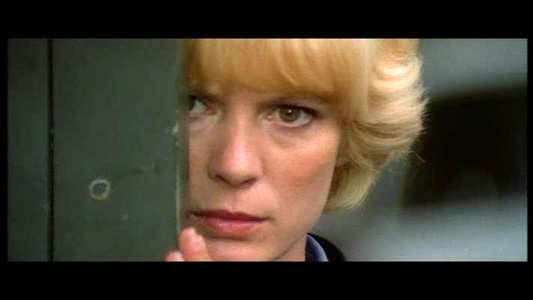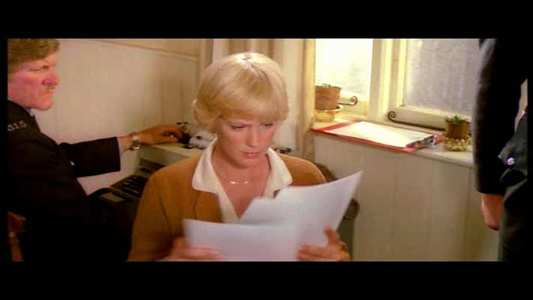The Black Cat
Introduction
Edgar Allan Poe`s short story `The Black Cat` has been adapted for the screen numerous times and no fewer than four DVDs with this title have passed through Reviewer Towers this year alone: volumes 1 and 2 of the unrelated MVM anime; the 1934 adaptation featuring Boris Karloff and Béla Lugosi and now this Lucio Fulci adaptation.
The Poe story is written by a man awaiting execution who tells of how, as an animal lover, he marries and they have many pets including an entirely black cat which he names Pluto. Although he likes the entire menagerie, he is particularly as fond of the cat which follows him everywhere but, when he returns home inebriated one night, Pluto avoids him and when he grabs the cat, it bites him. Drunk and full of rage, he takes Pluto by the throat and gouges out an eye with a penknife. The wound heals and the animal understandably gives him a wide berth. The animal grows to irritate him and one morning he hangs it from a tree. A replacement is bought, also missing an eye, identical but for a patch of white on its chest. The man dislikes the animal and is haunted by images of Pluto hanging from the tree. When descending the cellar stairs with his wife, the cat walks in front of his feet, nearly tripping him, and he aims an axe at it but is stopped when his wife stays his arm. Now, in a fury, he buries the axe in her head, killing her instantly. He carefully creates a false brick wall in the cellar behind which to conceal the body and after three visits the police find nothing. On the fourth visit, they are in the cellar when the sound of a cat comes from behind a wall. The police tear the wall down to find the decomposed body of his wife and the black cat sitting on her head.
This is all very interesting and a great tale, but Fulci and Biagio Proietti leave out 90% of this story, with Proietti writing one that is vastly different from Poe`s with the only similarities being the ending and the killing of the titular feline.
This adaptation begins in a quiet English village where a man leaves his house, climbs into his car and sets off on a fishing trip. En route, he reaches behind him for his bag and discovers a black cat on the back seat. Entering a trance, he releases the steering wheel and the car crashes into a parked vehicle, sending him through the windscreen before bursting into flames.
Jill Trevers (Mimsy Farmer), an American photographer, is photographing old buildings in the area when she finds an open crypt which she inexplicably enters, and finds a microphone on the floor. The microphone is traced to loner psychic Professor Miles (Patrick Magee) who believes he can record the thoughts of the dead. He is the owner of a black cat which he can control with his mind and use to kill those who have wronged him.

Video
The anamorphic 2.35:1 picture is slightly pillarboxed but is of reasonable quality despite some slight graining and softness. Cinematographer Sergio Salvati does a fine job of creating atmosphere but seems determined to out-Leone Leone with the number of close-ups of eyes - there are plenty of shots of Patrick Magee staring out from under his bushy eyebrows.

Audio
The Dolby Digital 2.0 Mono is perfectly acceptable and it`s clear that, as with most Fulci films, some if not all of the dialogue was recorded in post-production. Some scenes would have benefitted from a surround soundtrack, but this is how it was recorded. Not surprisingly, Pino Donaggio`s score is excellent and possibly the best aspect of the film.

Features
Skippable trailers for some other Shameless releases: `The New York Ripper`; `Manhattan Baby`; `Night Train Murders`; `Flavia the Heretic`; `Ratman` and `Venus in Furs`. These are also available to view separately as `forthcoming attractions`.
There is also the semi-obligatory theatrical trailer.

Conclusion
Lucio Fulci is a director whose name is almost synonymous with gore, yet here he keeps the bloodshed on screen to a minimum, relying on atmosphere to create the tension. In this, he is helped by Sergio Salvati, who does a sterling job, especially with the `cat vision` POV shots; Pino Donaggio`s score complements the photography well.
OK, that`s enough of the plus points, but where to start with the film`s weaknesses? Where Fulci`s films tend to fall down is in the writing and this is no exception as the reasons for Professor Miles wanting his victims dead is not particularly clear and there are a number of plot holes and general goofs. The cat is supposed to be under Professor Miles` control yet, when he hangs it, all sorts of `Exorcist` type shenanigans suggest a Satanic influence. How does Jill Trevers go so quickly from being a visiting photographer of old buildings to the Police`s semi-official photographer and part of the investigation team? Inspector Gorley is repeatedly scratched on his face by a cat and hit by a fast moving car yet only requires a strapped shoulder and has an unmarked face? How does a skeleton hung from the ceiling by the wrists manage to stay in one piece without any ligaments or tendons to hold the bones together?
The pacing is also a problem as, in his efforts to create a Hammer/Amicus style gothic horror, `The Black Cat` feels sluggish and there are times when I just wanted it to get a move on. I`m not a cat person (I`m not particularly a dog person either) and just don`t like them, but I`ve never found them particularly scary. For this film to work, you need to be scared by cats and believe that someone would run away from a cat ("Look out for the spikes!") because it gave them a funny look. The only black cat I`d flee from would be one that`s over three feet high! In terms of the performances, Patrick Magee overacts spectacularly, I`m not sure where the film is set but it`s not where Al Cliver is from and, such is the wooden nature of her performance, I felt Mimsy Farmer would make a great piece of furniture if handed to a carpenter.
I was almost driven to distraction by the constant close-ups of eyes and rather than the traditional shot - reverse shot, Fulci often shows two of these, so four close-ups of eyes. I lost count very early of these and, to satisfy my own curiosity, watched it again with a sheep counter to add up the number of `eye shots`. In less than 90 minutes, there are a staggering 108!
Lucio Fulci fans may enjoy this, or want to watch it if they haven`t seen it before but I`d rather just read the story or watch Edgar G. Ulmer`s 1934 adaptation instead.
Your Opinions and Comments
Be the first to post a comment!